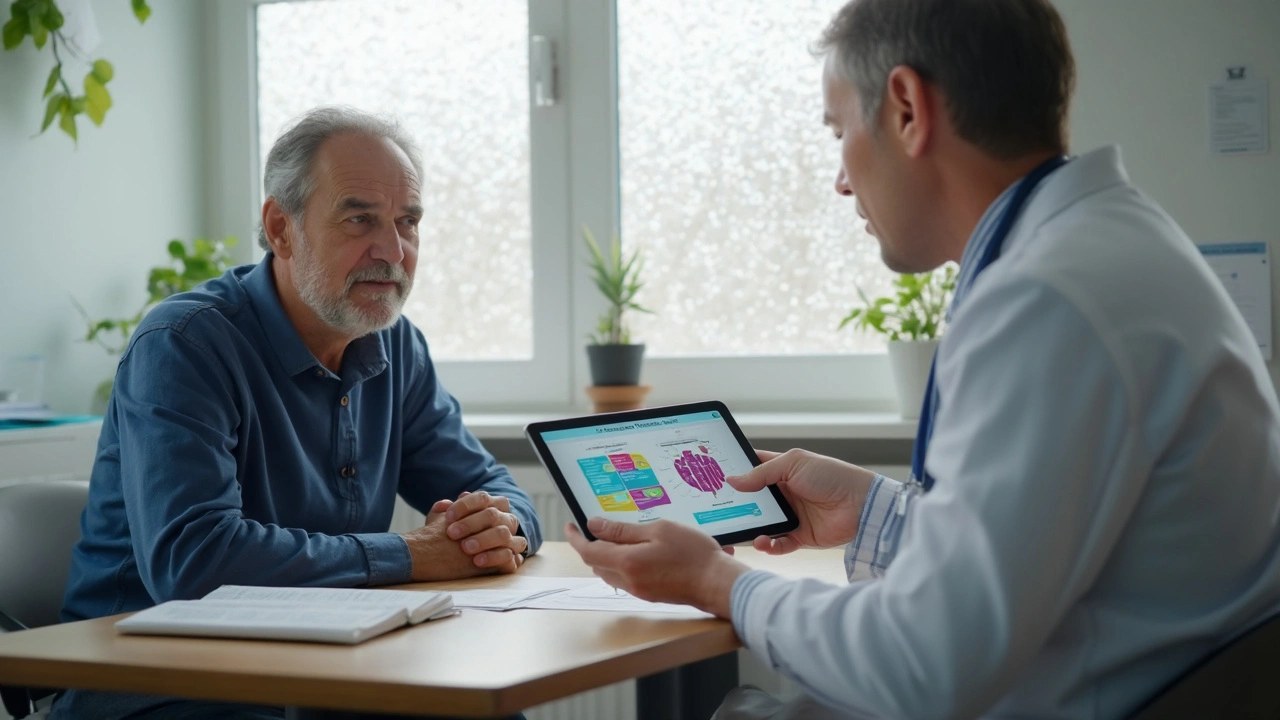SGLT2 inhibitors: what they do and how to use them safely
If you or someone you care for is starting an SGLT2 inhibitor, this page gives clear, practical advice — how these drugs work, what helps, and what to watch for. These medicines are commonly prescribed for type 2 diabetes and, increasingly, for heart and kidney protection. Read the short tips below so you’re prepared for real-life use, not just technical labels.
How SGLT2 inhibitors work
SGLT2 inhibitors (names you’ll see: empagliflozin, dapagliflozin, canagliflozin) stop the kidney from reabsorbing sugar. That means extra glucose leaves the body in urine, which lowers blood sugar and often trims a bit of weight. They also tend to lower blood pressure a little and have shown benefits for heart failure and chronic kidney disease in many large trials.
Because they act through the kidney, SGLT2 drugs need working kidney function to work well. Your doctor will check eGFR before starting and at intervals afterward. If kidney function falls a lot, the drug may be paused or stopped.
Common benefits and who might get them
Expect modest blood sugar lowering and small weight loss. If you have heart failure or certain types of chronic kidney disease, your doctor may recommend an SGLT2 drug even if your diabetes is controlled — because these drugs reduce hospital visits for heart problems and slow kidney decline in many patients.
They’re generally for adults with type 2 diabetes. They’re not routine for type 1 diabetes because of higher risk for diabetic ketoacidosis in that group, unless used under close specialist supervision.
Side effects to watch for are mostly manageable: genital yeast infections are common (men and women), and urinary tract infections happen more often. Staying clean and dry, and starting treatment early at the first sign of symptoms, helps a lot.
Serious but less common risks include low blood pressure and dehydration, especially if you’re on diuretics or have low fluid intake. Another rare but important risk is euglycemic diabetic ketoacidosis — ketoacidosis with only mildly raised glucose. If you have nausea, vomiting, stomach pain, or rapid breathing, seek care and mention the SGLT2 drug.
Stop the medication before planned major surgery or if you have severe illness with poor food or fluid intake until you’re stable again. That lowers the chance of ketoacidosis and dehydration during stress.
Practical tips: take the pill once daily as directed, drink enough water but don’t overdo fluids, check your feet and genital area for infections, and tell any treating doctor or dentist you’re on an SGLT2 inhibitor. Carry a list of your medicines so interactions with diuretics or blood pressure drugs can be reviewed.
Ask your prescriber how often to check kidney function and when to stop the drug. If you notice unexpected tiredness, breathing changes, fever, or severe abdominal pain, contact medical care right away. These drugs work well for many people, but knowing the signs and simple precautions makes them safer and more effective.
Cutting-Edge Diabetes Treatments for 2025: SGLT2 Inhibitors, GLP-1 Agonists, and New Alternatives to Metformin

Discover the latest breakthroughs in diabetes management for 2025, as this article explores advanced treatments like SGLT2 inhibitors, GLP-1 agonists, and novel alternatives to metformin. Dive into how these new options change the approach to glycemic control, weaving in the most up-to-date research, practical tips, and real-world facts. The article breaks down mechanisms, pros and cons, and how these drugs are reshaping lives. Readers get the details they need to talk with their doctors and stay ahead in diabetes care. Whether you’re managing diabetes or interested in new therapies, here’s what every patient and caregiver should know.
- April 25 2025
- Tony Newman
- 19 Comments
